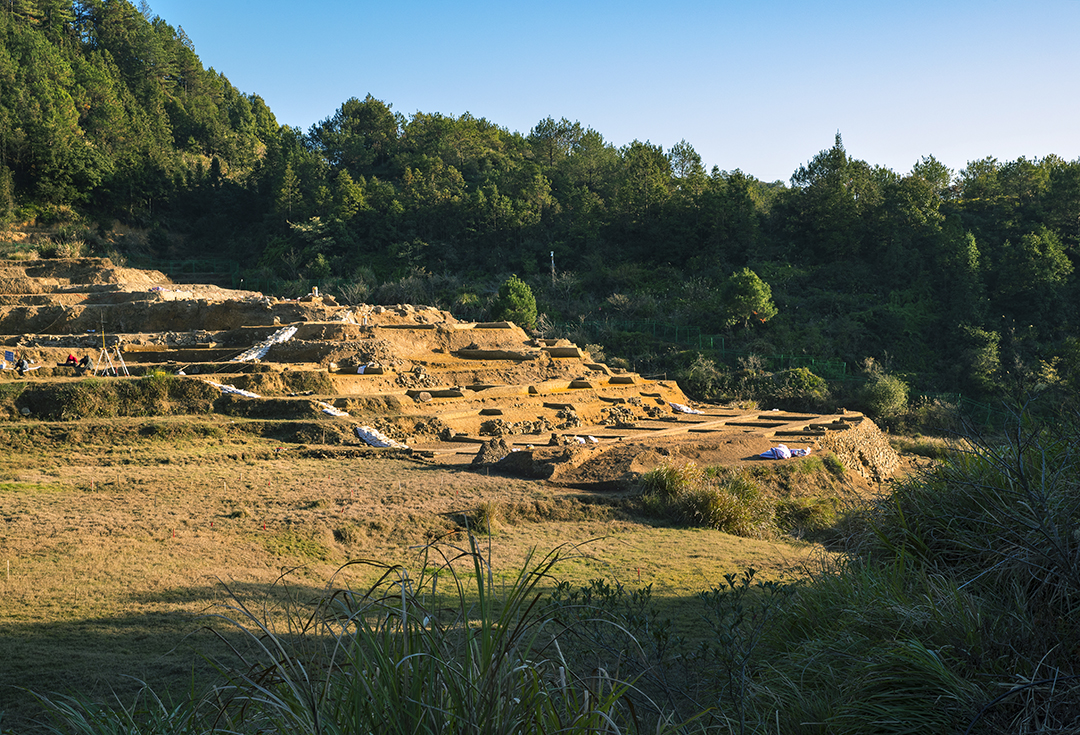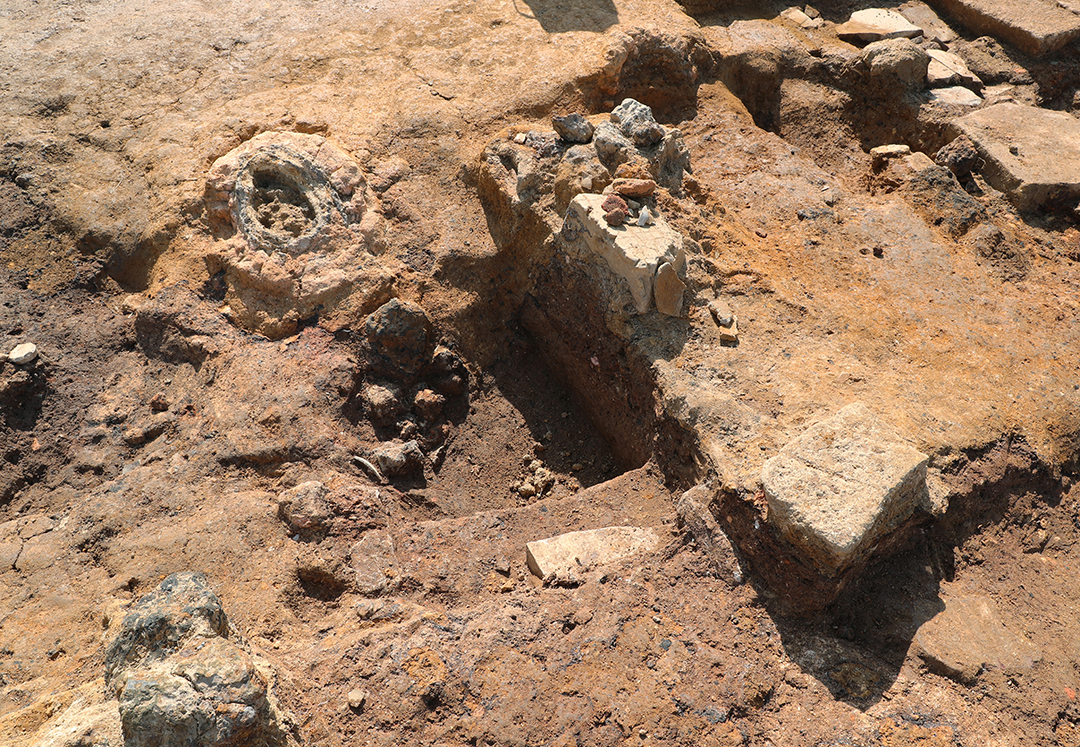
The Xiaocaopu Iron Production Site of Qingyang Village in Anxi is a representative component of the export Production Sites in Quanzhou as an emporium of world maritime trade. It is situated in the Daiyun Mountain region about 70 kilometers northwest of Quanzhou. Qingyang Village in Anxi was one of the dedicated iron plants set up by the government in the Song Dynasty. The Xiaocaopu Iron Production Site of Qingyang Village is located on the hillside in the south of Qingyang Village, covering an area of over 10,000 square meters. It includes a smelting site, a group of ancient mining pits across the mine, the site of the ancestral house of the Yu family of iron smelters, a segment of an ancient trail, and the hills that provided fuel wood for smelting. Preliminary analysis based on archaeological investigations, excavations and tests indicates that the method employed at Xiacaopu was bloomery smelting with small blast furnaces. The product of this process was sponge iron, which would be calcined into iron ingots before being shipped to another location for casting. Analysis based on tests with furnace walls and furnace slag has further confirmed that the iron was casted using the method of bloommery and charcoal was the main fuel. The 10-plus charcoal samples collected from the site have been dated by carbon-14 tests to around the 10th and 11th centuries. This, along with the age attributes of the unearthed coins and potsherds, confirms that the site was a bloomery location during the Song Dynasty.



 闽公安备35050302000734
闽公安备35050302000734
